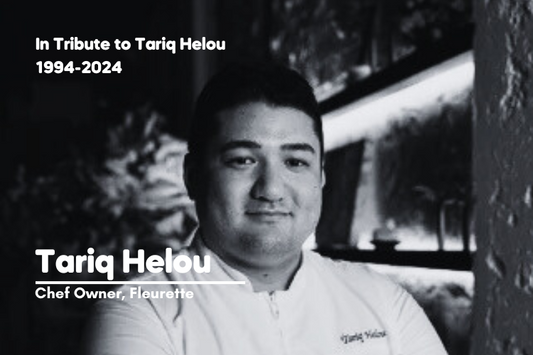Learning By ‘School Fees’
Share
 We speak to:
We speak to:
Chi Pin Han
Chef-Partner, Ishinomaki Grill, Ki Teppan and Rogama, Table 33
My customers always ask me, what’s the “best” sake?
- There is no “best” sake, it depends on what you are eating as the taste of the food will affect the taste of the sake. At our restaurants, we find that our customers come for the food, so we will base the sake selection around the dishes
- After drinking too many bottles, your taste buds will be tired. So try to arrange the higher quality sake first, and not after 30 glasses
- Look for boutique sake, from smaller passionate brewers, who will delight you with more quality at a reasonable price. Sometimes I can’t believe how good these sakes are, yet the prices are sometimes even lower than the mass market ones
When chef Chi Pin Han first started out in the industry 40 years ago, he didn’t enjoy sake. “It tasted strongly like just alcohol, and I drank it because it was expected for you to accept whenever anyone offered,” he reminisces.
That changed around 1992, when he was sent on attachment to a top restaurant in Yokohama, which served the elegant seasonal degustation known as kaiseki. Pin Han shared, “Every course was accompanied by a different sake! Each was a warm sake, at different temperatures. The chef kindly let me try the pairing too as I was a foreigner in his kitchen. I remember thinking that these sakes were different, warmed and more interesting. I started to change my mind about sake after that.”
Learning about sake and food pairing was a gradual process for Pin Han. Working in hotels for the first part of his career, his team would do food and sake pairings, but not to the same extent as today. Along the way, he got to know sake better, especially after opening his first restaurant, Ishinomaki Grill 9 years ago. He proudly tells us that 90% of his clientele are regulars, thanks to his customer-centric approach. “Sometimes customers get drunk, and will ask for the best sake. At that point, I’ll give them a simple sake as they are no longer able to appreciate and enjoy the drinks. The next day, they will thank me for watching out for them,” he recounts as an example.
Pin Han is doubly proud of his wife Janice who has independently become one of Singapore’s go-to sake experts. “I learnt but not through the textbook,” laughs Pin Han. “When Janice asked me to take the JSA Diploma International with her, I looked at the very thick course book and said thank you very much, please go ahead to get your certification, I don’t need to (as well).”
“Going for courses is good, but for chefs I feel that you need to start with some basic understanding,” says Pin Han, more seriously. “Otherwise, when you go for the course, you may be wasting your time as you don’t really know what’s going on. If you have already tried a tokubetsu, and your curiosity has been aroused, then it’s the right time to go for a course.”
Alternatively, you can pay “school fees” - learning by visiting other restaurants to eat and drink, and expanding your horizons by doing so. “Some chefs just work for the salary, but if you have the will to improve, then you have to know more than other people. Sake pairing is one way to be better,” he emphasises.
Trade professionals:
You are invited to attend Sake Matsuri’s Trade Show on 15 November 2024 at the iconic F1 Pit Building! Pre-register below for free.
Link: https://sakematsuri.sg/products/sake-matsuri-trade-show-friday-15th-november-2024
Sake Matsuri Trade Show
Date: 15 Nov 2024
Time: 12pm-4pm
Venue: F1 Pit Building, Garage, 1 Republic Boulevard
*Pre-registration is free, $50 for on-site entry
**Open to trade professionals only

